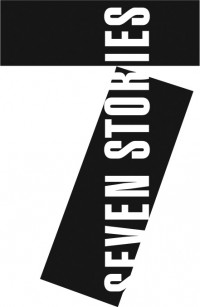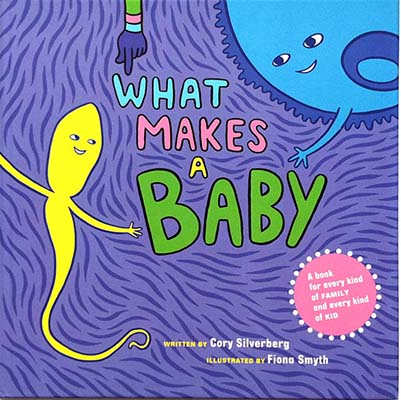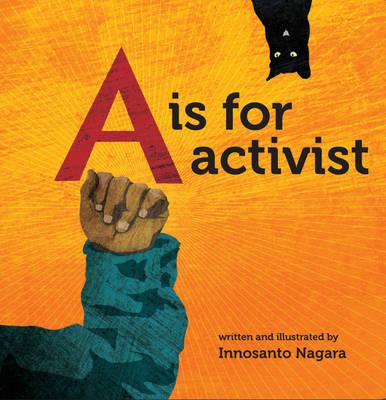
A is for Activist
by Innosanto Nagara
New York: Seven Stories, 2013.
What Makes a Baby?
by Cory Silverberg
New York: Seven Stories, 2012.
Even very young children can recognise that their assigned gender isn’t correct and they can search for understanding and respect from their friends and relatives.
And children can be taught that they were created in non-traditional ways.
And meanwhile, an alphabet book can offer pages such as: L is for L-G-B-T-Q! Love who you choose, ‘cuz Love is true!’ And Q is for ‘Questioning coercion.’ T is for ‘Trust in The True The he she They That is you!’
These are just a few examples from the excellent set of books for young readers that Seven Stories Press has published in recent years.
I first discovered Seven Stories Press a few years ago, when I read Marcus Ewert’s book 10,000 Dresses, which they published in 2008. In this book, young Bailey has been told she is a boy and yet she feels and knows that she is a girl. Bailey doesn’t find much support at home but eventually makes a friend who accepts Bailey for who she is. Though some of the story is rather depressing (though sadly realistic), Ewert’s picture book is one of my favourite texts on trans issues for younger readers. Since it is the only picture book I am aware of to feature a trans child (there are picture books with transvestite or cross-dressing children), I became curious about the publisher that dared to offer books on topics that some adults might not want children to have access to.
As Seven Stories Press notes on its website, ‘Stories Press publishes works of the imagination and political titles by voices of conscience…[and is] most widely known for its books on politics, human rights, and social and economic justice’. The press also publishes a wide range of books for adults, translated books in English as well as works in Spanish translation, and non-fiction texts.

Cory Silverberg’s book What Makes a Baby? is a unique book on the market. There are, of course, plenty of books for children that explain how mummy and daddy love each other and do a special horizontal dance and then nine months later a little baby pops out (or is dropped off by a stork), but what makes Silverberg’s book different is that it is appropriate for all families, not just heterosexual ones. The illustrations by Fiona Smyth show mostly gender-neutral human-like creatures in an array of colours (I quite like the blue people) and the text explains how some people have an egg and others have sperm and that somehow the egg needs to meet the sperm. There is space to allow an adult reading Silverberg’s book to a child to explain how this happened in this particular child’s case, i.e. via heterosexual sex, insemination, surrogacy, etc.

Innosanto Nagara’s alphabet book, A is for Activist, is likewise unique, as the title alone suggests. Here, children are invited to imagine a world of equality and diversity and love and to consider some of the issues of social justice facing us, and they are encouraged to participate in it as active members of society. Rather than assuming that children are too young to be aware of the world around them, Nagara’s book engages young readers and takes it for granted that they should be conscious of civil rights, the environment, politics, advocacy, and liberty. As the first page says, ‘A is for Activist. Advocate. Abolitionist. Ally. Actively Answering A call to Action. Are you An Activist?’ The answer for many of the children reading the book will be yes.
These are just a few examples of some of the wonderful texts that Seven Stories Press offers for young readers.
S is for Seven Stories, and B is for beautiful books.











